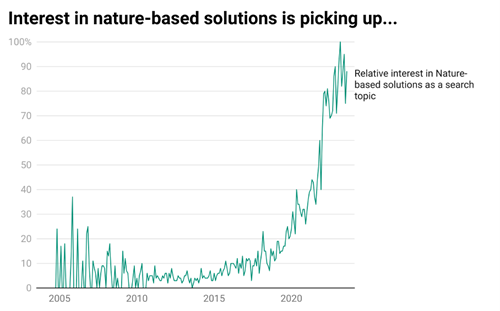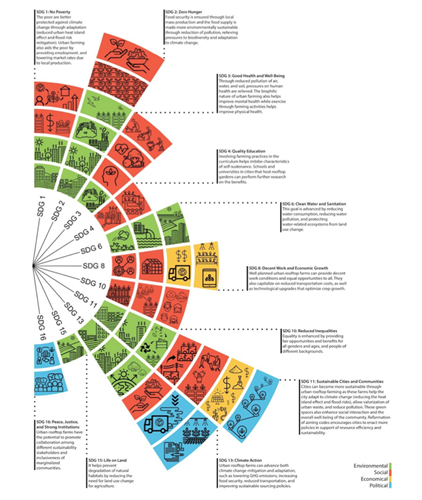Yanaika obtained an Msc in Bioscience engineering with a focus on Environmental Technology. She then deepened her knowledge on climate change through a second Msc in Carbon Management at the University of Edinburgh.
Nature-Based Solutions Are on The Rise and Here to Stay

What Are Nature-Based Solutions?
The concept of nature-based solutions has many definitions. One prominent definition from the International Union for Conservation of Nature:
“Nature-based solutions are actions inspired and supported by nature. They are cost-effective, simultaneously provide environmental, social and economic benefits, and help build resilience.”
This suggests that nature-based solutions aim to address societal challenges by observing and learning from nature. Consequently, problems are resolved in a manner that addresses the three pillars of sustainability: people, planet and profit.
A prime example of nature-based solutions is wildlife crossings, or “ecoducts”. These tunnels or bridges span busy highways, providing a safe passage for local fauna and flora. Such interventions are crucial because highways often fragment vast stretches of natural landscapes into isolated patches, leading to numerous adverse effects. Ecoducts are specifically designed to accommodate local wildlife, ensuring these species can access larger expanses of land.
Another example is the conservation or restoration of forests. These ecosystems play a pivotal role in reducing atmospheric CO2 concentration by storing carbon in both biomass and soil. Nature-based solutions also offer protective measures for our coastlines against rising sea-levels. For instance, sand dunes act as natural barriers against storms, while bio-builders like mussel-beds or biogenic reefs fortify the shoreline. Additionally, urban rooftop gardens in cities can mitigate emissions resulting from food transportation.

Chart: Econopolis Strategy – Source: Google Trends – Created with Datawrapper
Why Look at Nature-Based Solutions?
The momentum behind nature-based solutions is growing and it’s clear to see why. These solutions offer a wide array of benefits. For instance:
- Forests: While they may not be the silver bullet when it comes to climate mitigation, forests significantly contribute to our adaptive capacity in a changing climate. They act as natural coolants for nearby residential areas, thereby making a warmer world more habitable. Moreover, forests are biodiversity hubs, playing an indispensable role in addressing the biodiversity crisis.
- Coastal protection: Implementing nature-based solutions for coastal protection serves a dual purpose. Not only do they aid in adapting to rising sea levels, but the bio-builders involved often become biodiversity hotspots. Furthermore, these natural settings have been shown to enhance the mental well-being of visitors.
- Urban rooftop gardens: Beyond the obvious benefit of reducing emissions in the food sector, these gardens, when designed optimally, can bolster food security and reduce flood risk.
Just to illustrate the range of advantages of urban rooftop gardens, the visual below summarizes its potential benefits:

Figure: The many benefits urban rooftop gardens could unlock coupled to the United Nation’s Sustainable Development Goals. (Planet Reimagined, Navaz Bilimoria, Yanaika Denoyelle, Alexander Nguyen, 2020).
Econopolis Strategy and Nature-Based Solutions
Econopolis Strategy is actively engaged in the CASSANDRA project, which centers on the integration of nature-based solutions for the management of the Flemish coast. Within this project, we study the economic and financial viability of the project. Additionally, we are focused on conceptualizing these advantages into a governance framework. This will pave the way for the effective implementation of nature-based coastal solutions along our coastline.
